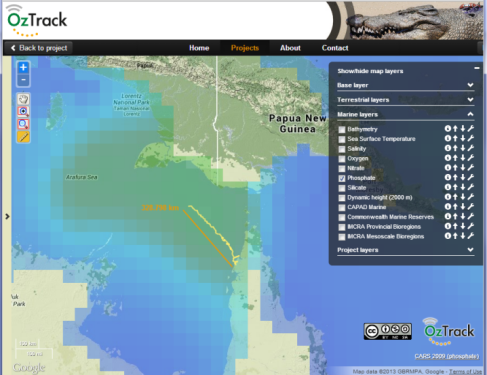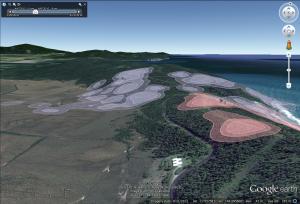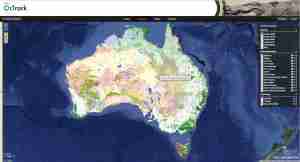
The track of an Olive Ridley turtle off the west coast of Cape York, Queensland, Australia. The track is overlayed on the CARS2009 phosphate dataset with 40% opacity. The measuring tool shows clearly that the animal travels over 300 km from the Queensland coast.
After discussion with Australian and New Zealand researchers tracking animals in the marine environment, we are pleased to announce the addition of the CSIRO Atlas of Regional Seas (CARS 2009) climatological dataset to OzTrack.org.
Now OzTrack users can overlay their tracking data on a suite of georeferenced layers describing water properties across the world’s oceans. This includes sea surface temperature, salinity, sea surface height, oxygen, nitrate, silicate and phosphate. The data covers the full global oceans on a 0.5 degree grid and each cell holds the average/interpolated profile data for that locality.
With these recent additions, OzTrack now holds 21 environmental layers obtained from online geospatial repositories. We offer a ‘point-and-click’ querying tool to extract data from the animal’s track (i.e. animal ID, date, time and coordinates of the location fix) and the environmental characteristics of that locality (e.g. sea surface temperature, salinity). We have also increased the size of the map window, and added a measuring tool and opacity slider to the OzTrack toolkit.
It is our hope these recent additions will help our users tracking animals in both terrestrial and marine systems to better understand the environment in which their tagged animals inhabit.
Check out the new environmental layers at http://oztrack.org








